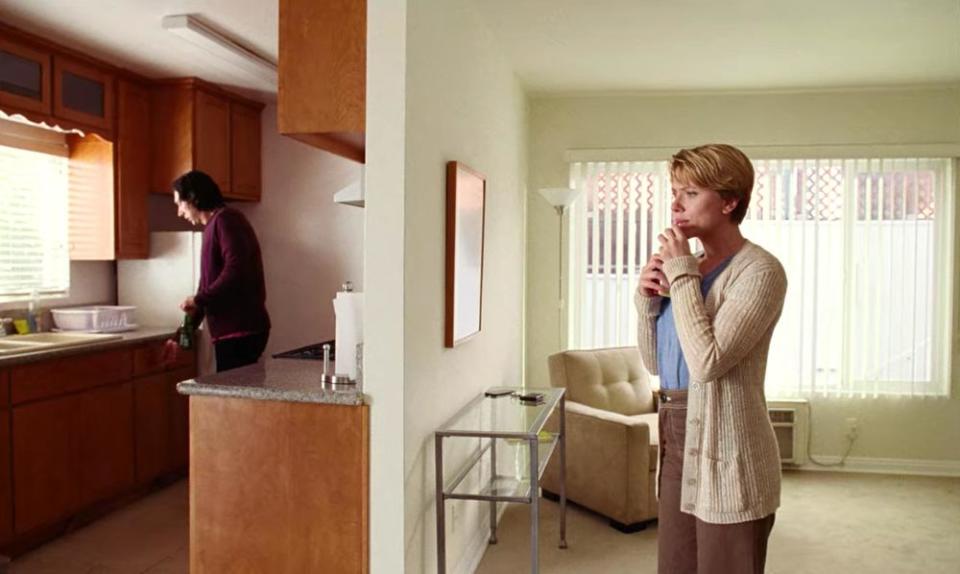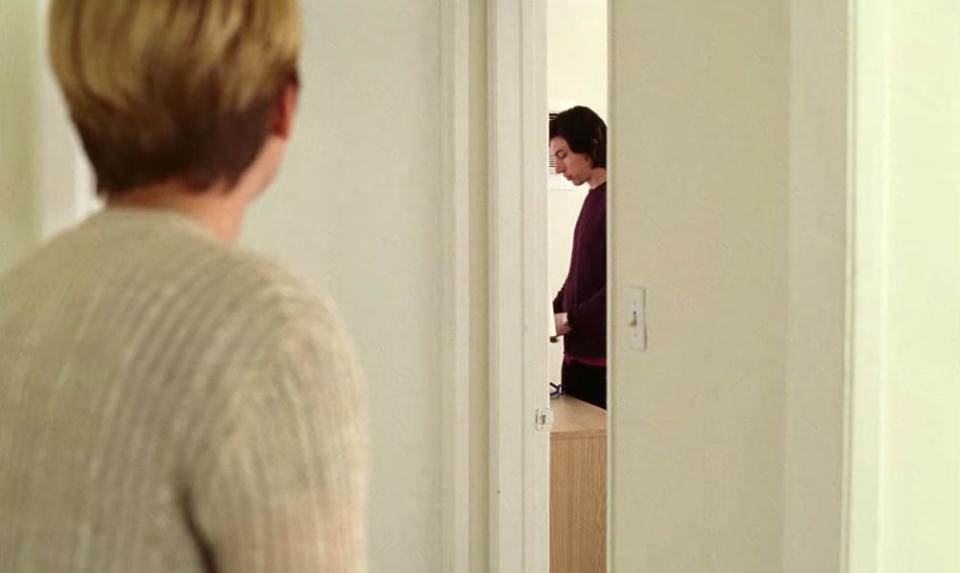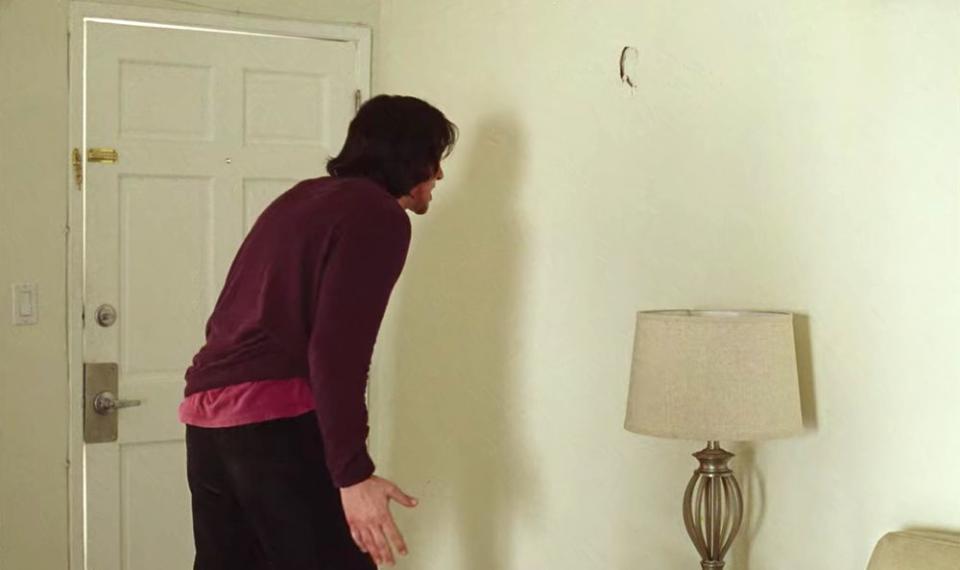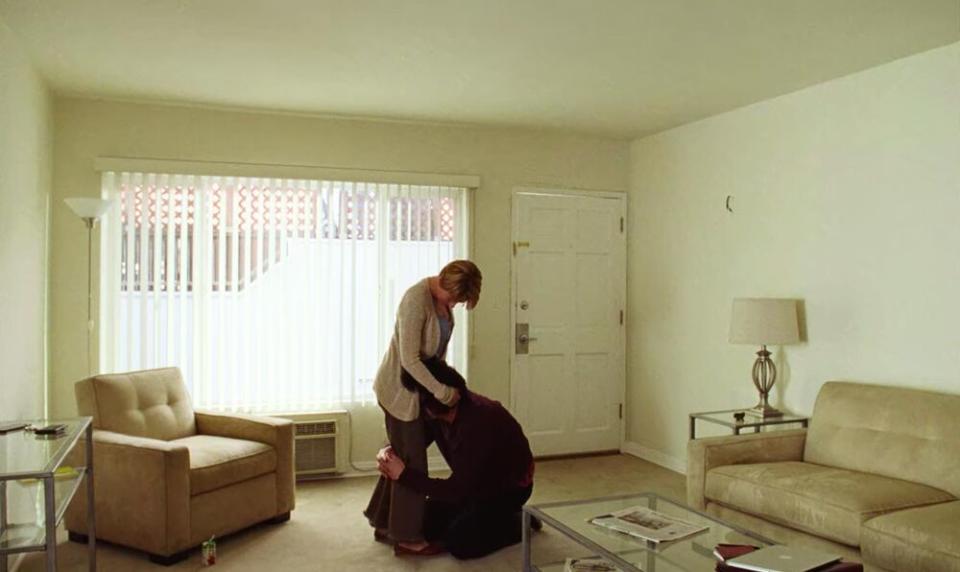Noah Baumbach breaks down Marriage Story’s devastating fight scene
For a so-called Marriage Story, the main players rarely communicate. Throughout Noah Baumbach’s affecting portrait of a divorce, Charlie (Adam Driver) and Nicole (Scarlett Johansson) filter themselves in front of their young son or negotiate through cutthroat lawyers — until a climactic fight scene smashes the unbearable tension.
“They’ve lost their voices; they’ve lost a sense of who they are,” the filmmaker says of this pivotal point. “They’re trying to figure out what they believe anymore. And that’s a dangerous place, I think, for a couple to find themselves.” Charlie and Nicole rediscover their own voices — and perspectives — in this painstakingly choreographed sequence, which was shot over two days. It’s a cruel, relentless duet of a scene — but ultimately offers relief. “It was the most difficult scene I’ve ever shot in a movie,” Baumbach tells EW. “But also the most rewarding.”

The scene arrives two-thirds of the way into the film and marks the only time that Charlie and Nicole are completely alone together, with nobody to moderate their conversation or even just hear it from in the next room. The walls of Charlie’s new L.A. apartment, too, are almost completely unadorned; Nicole comments on it when she walks in. There’s nothing at all in this room except for these two people and their mountain of baggage, and Baumbach intentionally started the scene in a wide shot, “because I wanted to you to kind of feel them in that empty space.”
The undecorated apartment is one of the film’s many “transitional spaces,” Baumbach says, along with the sterile courtroom, the lawyer’s offices, Charlie’s car. “They’re on a journey, in a way, and they’re passing through these spaces to try to get to someplace that I think, at this point in the movie, feels almost impossible, but is some place of communion.”

Baumbach had a surprisingly difficult time finding an apartment to shoot in that suited his particular needs. “What was very important to me was to have that kind of kitchen and living room so that we could see them in separate rooms,” he explains, “so they can’t see each other, necessarily, but we can see both of them. It was almost like having a split screen built into the wide shots.” The scene makes highly intentional use of the space, separating the couple and then bringing them back together in almost musical beats driven by the contentious dialogue. The careful composition of a shot like this in such a dynamic scene, too, demanded a great deal from Driver and Johansson (both of whom delivered what have widely been regarded as career-high performances in the film).
“It is like a dance, or like a stunt, like an action scene,” Baumbach says of the elaborate blocking, which the actors rehearsed extensively before shooting. “It needed to be very carefully choreographed, both because we had a real plan of execution in the way we were photographing it, but also I think for the actors to have very true guidelines. I think that then gives them the freedom to lose themselves, because they know they’re going to be caught in some way.”

As the conversation starts to heat up, Charlie does all that he can to cut it off. “In the beginning, Charlie is always the one moving away. And she’s kind of following, she’s trying to get him to focus on what she’s trying to say, and he keeps finding odd jobs in the apartment, he’s picking up Henry’s knapsack, he’s going to put stuff away in his room,” Baumbach says. “He’s finding distraction because, at least at that point, I think he’s afraid of what will happen if he starts to really commit to the conversation. And I felt like that also said a lot about their relationship in the movie. He’s kind of catching up the whole movie, and I felt like, when we blocked it, I was thinking that this was also a way to kind of play out that relationship between them.”

Once Charlie does commit to the conversation, it packs a punch — first in the brutality of the exchange, which displays both characters’ expert knowledge of how to hurt each other, and then in an actual punch to the wall, which leaves the first visible damage of this emotional war. “They don’t know where to put all of this pain, so they put it into this language, these physical gestures,” Baumbach says. “For Charlie, I think he’s a fairly controlled person, and something Adam embodies so beautifully in the movie. So when he loses control, it has a price.”
The moment is echoed in a later scene (during much of which this hole in the wall is visible in the background) when Charlie does real damage once again by accidentally cutting himself with a blade that he thought was retracted. For both scenes, “I [wanted] to find a physical way to express what’s been going on emotionally,” Baumbach explains.

Once everything has been said, Charlie drops to his knees, sobbing and sorry, in a piercing final image. The juice box that Nicole had accepted from him upon arrival lingers on the floor, an artifact of 10 minutes prior. “The presence of the juice box makes me sad,” Baumbach admits. “It’s recent history. It’s still a moment where things maybe could be salvaged. It all happened so quickly, [crossing] this line from civil conversation to an all-out fight.”
Once the fight is over, though, this moment — of someone holding him too close, after hurting him too deep — is “connected directly” to Charlie’s devastating performance of Stephen Sondheim’s “Being Alive” later in the film. “He doesn’t get to ‘Being Alive’ without being in that position, at the end,” Baumbach says. As well as being a turning point for Charlie, it’s a tender moment for the embattled pair. “Even in this scene, which maybe is the most contentious things become, you still feel that intimacy,” the filmmaker says. “I always felt, throughout the whole movie, that love exists in every scene.”
Marriage Story is now streaming on Netflix.
Related content:

